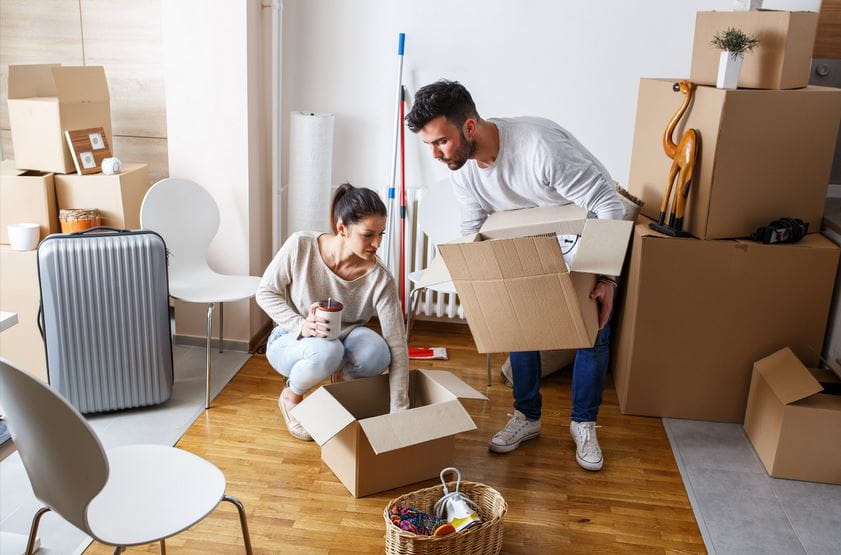
This is a question that can be answered in two ways. The first and more obvious way is to check with the company you are renting the storage space from. They should be able to tell you what type of climate control they have and how often they move the furniture around, which would indicate the likelihood of your furniture getting ruined.
The second way to answer this question is to do some research on your own. If you find that most people who rent storage space for their furniture say that their furniture did not get ruined, then it’s likely that your things will be fine too.
Will my stuff get ruined in storage?
As a general rule, if you can’t afford to lose it, you probably shouldn’t be putting it in your storage unit. A majority of the time your belongings will be just fine and there’s nothing to worry about, but self storage always come with a risk – albeit a small one – that items will get damaged or lost.[1]
Does furniture mold in storage?
Mold can grow on any type of furniture. If you catch it early, you might be able to clean off the mold. But sometimes the spores grow deep into the material making it more difficult to remove. Mold growth requires moist environments, so the key is choosing a storage unit that stays dry.[2]
Is it OK to store furniture in the garage?
Wooden furniture Pretty much any wood is susceptible to its harsh conditions. As a result, if you store wood furniture in your garage, expect some damage to it over time. For example, changes in the humidity will cause the wood to swell and contract, leading to cracks that you might not be able to repair.[3]
What items should not be put in storage?
1) Food. This is one of the most frequently overlooked safety rules when using self-storage! 2) Live animals / pets. 3) Plants. 4) Stolen items. 5) Hazardous materials. 6) Scented or wet items. 7) Valuables.[4]
What can get ruined in a storage unit?
Flammable items Gasoline, ammunition, and fireworks have no place in a storage unit because of the heat and lack of ventilation. Your lease agreement should specify what else makes the list.[5]
How do I protect my belongings in storage?
Before stacking boxes or other items in your storage unit, be sure you pack with safe-keeping in mind. Use plenty of packing material to keep fragile items safe inside boxes. Wrap furniture to keep it safe from scrapes and dings when moving it into the storage room. Use plastic to protect clothing and other materials.[6]
How do you keep furniture from molding in storage?
Packing your possessions in waterproof boxes or with silica gel will prevent mold from growing. Preventing moisture from forming in your storage unit is the most effective way to combat it. Investing in a high-quality, moisture-resistant storage unit would minimize all of your stress and anxiety.[7]
Should I cover sofa in storage?
Completely Cover Your Couch: While many people use shrink wrap to prepare a couch for self storage, if stored for more than six months, plastic wrap may promote a build up of moisture. Instead, consider wrapping your couch in soft blankets secured with bungee cords or packing strips.[8]
How do you protect stored furniture from damp?
3 Tightly wrap any furniture fabrics and wood – In order to protect your items from mould or fungus, you should wrap them securely to stop any damp getting in. Use cloth sheets and blankets to protect your wooden furniture, this will stop dust and moisture.[9]
Will furniture go Mouldy in garage?
2. Wooden furniture. You may have no other option, but if you do, be aware that wooden furniture won’t stay in top condition if it’s left in a cold, damp garage. Wood is fragile enough to be affected by changes in humidity, and the fibres in the wood will swell and contract as the moisture level in the air changes.[10]
What temperature should furniture be stored at?
How do you store furniture long-term? You need to control the temperature and the moist. The temperature shall be between 60-80 degrees Fahrenheit, and you should keep moist around 40%. You also need to wrap the furniture to protect it from dust and dirt.[11]
How does cold weather affect wood furniture?
Cold weather and fluctuating temperatures are particularly bad for wood furniture. The wood material contains a certain amount of water, making it pliable. This leads wooden furniture to expand when hot and contract when cold. After enough expansions and contractions, your furniture can start warping.[12]
